
Greek painter, sculptor, and architect of the Spanish Renaissance
El Greco [The Greek]
Doménikos Theotokópoulos [Δομήνικος Θεοτοκόπουλος]
was born,
October 1st, 1541
in Candia, Crete*, Greece.
✻ part of the Republic of Venice and the center of Post-Byzantine art at the time
❦
El Greco is regarded as a precursor of both Expressionism and Cubism, while his personality and works were a source of inspiration for poets and writers such as Rainer Maria Rilke and Nikos Kazantzakis. El Greco has been characterized by modern scholars as an artist so individual that he belongs to no conventional school. He is best known for tortuously elongated figures and often fantastic or phantasmagorical pigmentation, intertwining Byzantine traditions with those of Western painting.
He trained and became a master within that tradition before traveling at age 26 to Venice, as other Greek artists had done. In 1570, he moved to Rome, where he opened a workshop and executed a series of works. During his stay in Italy, El Greco enriched his style with elements of Mannerism and of the Venetian Renaissance taken from a number of great artists of the time, notably Tintoretto. In 1577, he moved to Toledo, Spain, where he lived and worked until his death. In Toledo, El Greco received several major commissions and produced his best-known paintings.
El Greco’s dramatic and expressionistic style was met with puzzlement by his contemporaries but found appreciation by the 20th century.
I am in mystical awe every time I see one of his paintings.
❦
So here’s a glimpse of this master’s work & words

❦
“You must study the Masters but guard the original style that beats within your soul and put to sword those who would try to steal it.”
❦
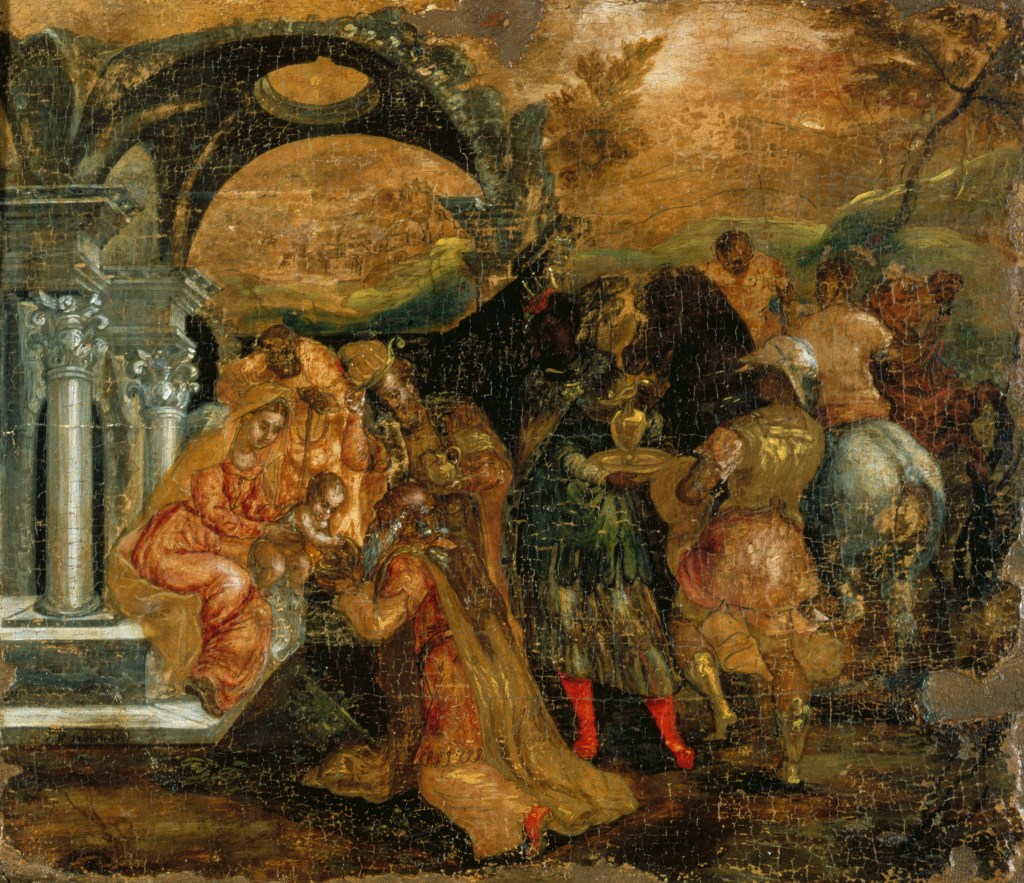

❦
“Anyway, I would not be happy to see a beautiful, well-proportioned woman, no matter from which point of view, however extravagant, not only lose her beauty in order to, I would say, increase in size according to the law of vision, but no longer appear beautiful, and, in fact, become monstrous.”
❦

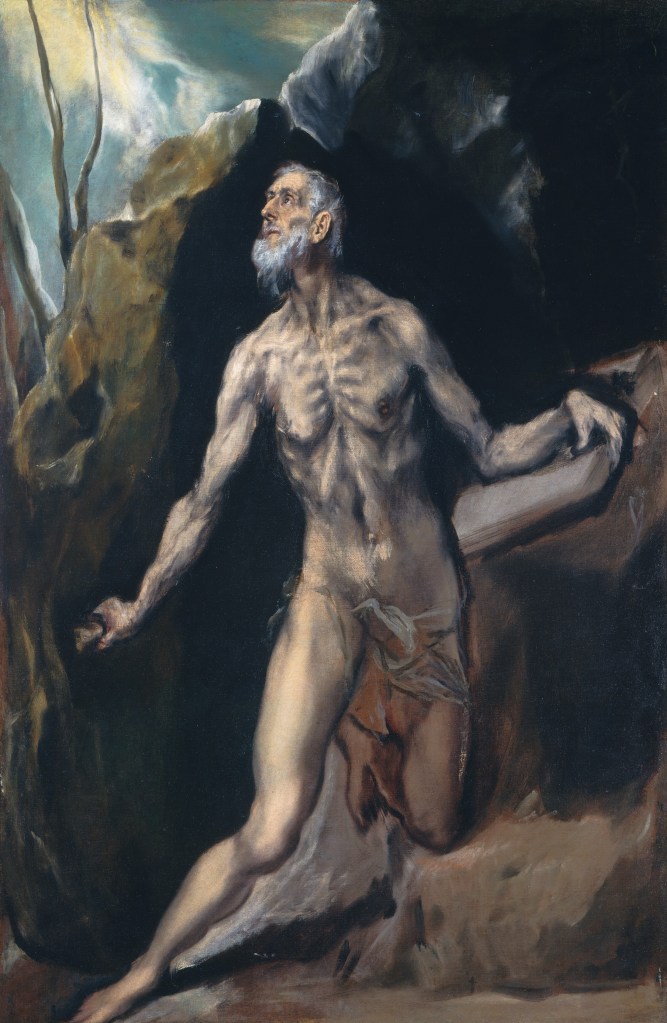
❦
“.. he [= Michelangelo] was a good man, but he did not know how to paint.”
❦


❦
“If Vasari really knew the nature of the Greek style of which he speaks, he would deal with it differently in what he says. He compares it with Giotto, but what Giotto did is simple in comparison, because the Greek style is full of ingenious difficulties.”
❦


❦
“Now, in order to claim some knowledge of painting, Vitruvius speaks of the consideration of the perfect human body and about how good sculptors and painters in order to make it give it a height of ten faces, and I say that according to them they have read and they say that this proportion is based on knowledge of measurement and that it happens that without it it is not possible to have proportion or consideration because those who are not cognizant of this do not count.”
❦
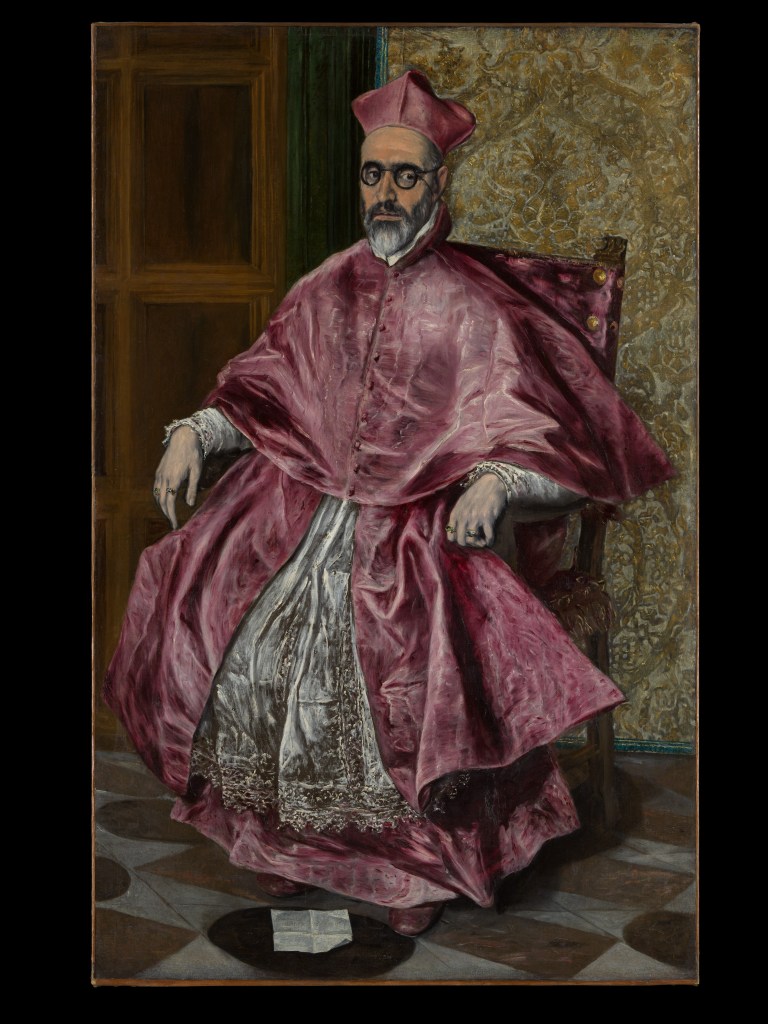

❦
[El Greco ‘confined to his bed’] “.. holding, believing and confessing the Faith of the Holy Church of Rome…. in whose Faith I have lived and die, as a faithful and Catholic Christian…. because of the gravity of my sickness I was unable to make a will and gives power to Jorge Manuel Teotocopuli my son, and of Doña Jerónima de las Cuevas [his wife he never married], who is a person of honesty and virtue [to make his testament, arrange his burial, and pay his debts, and the] remainder of my possessions to go to Jorge Manuel, as universal heir..”
❦


❦
“I hold the imitation of colour to be the greatest difficulty of art.”
❦
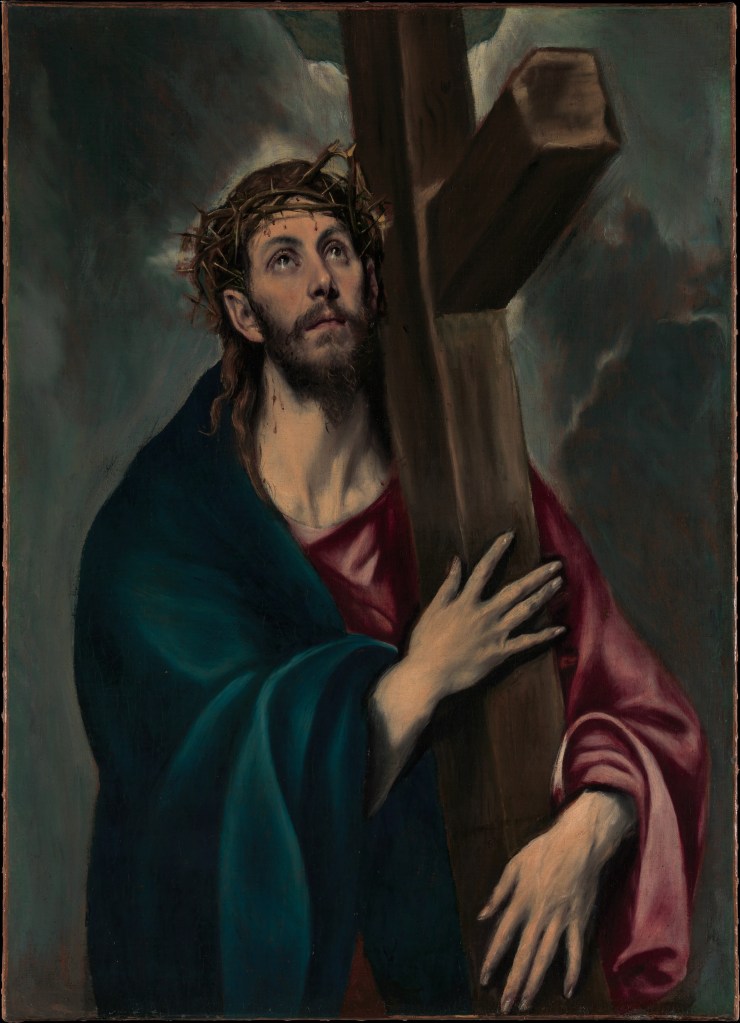
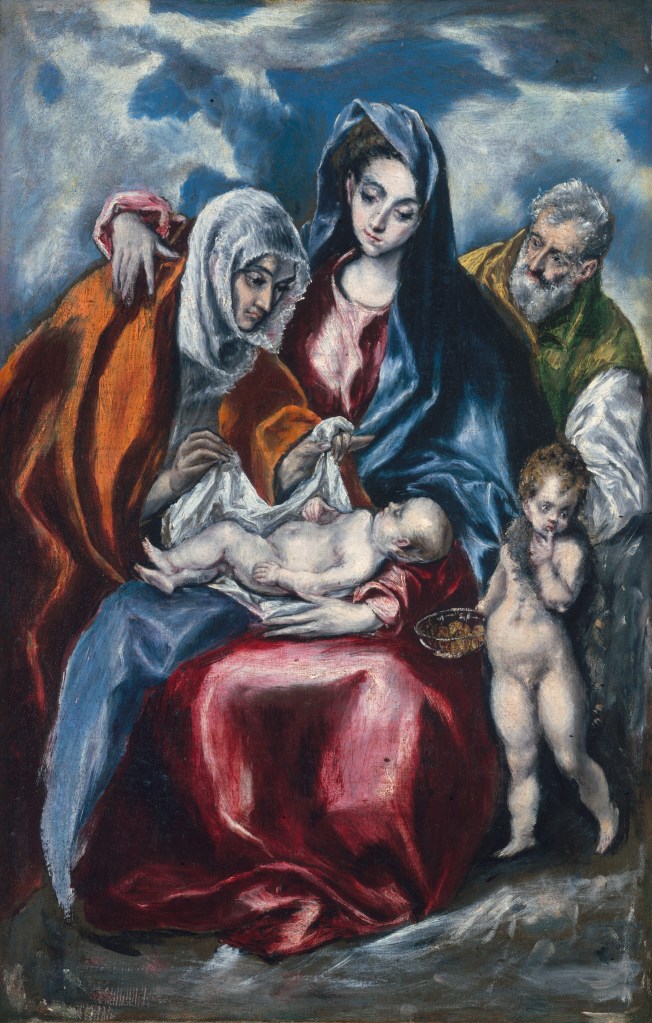
❦
“It has been necessary to show the Hospital de Tavera as a model, for the building hides the Visagra Gate, and the dome obscures part of the town, and once treated as a model and moved from its place, it seemed better to me to show the main façade…. the rest, and its proper relationship to the town can be seen on the plan. Also, in the representation of Our Lady presenting the Chasuble to Saint Ildefonso, in making the figures large, I have applied, in some way, the observation made of celestial bodies that an illuminated body seen at a distance may appear large although it be small.”
❦
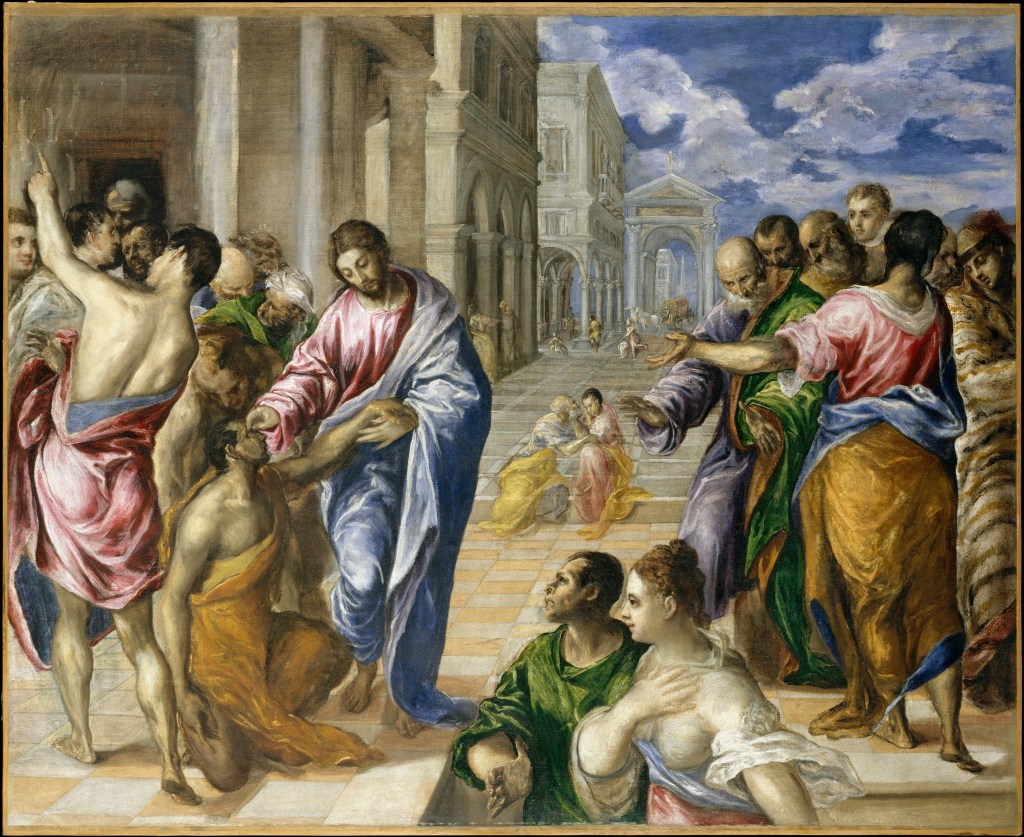
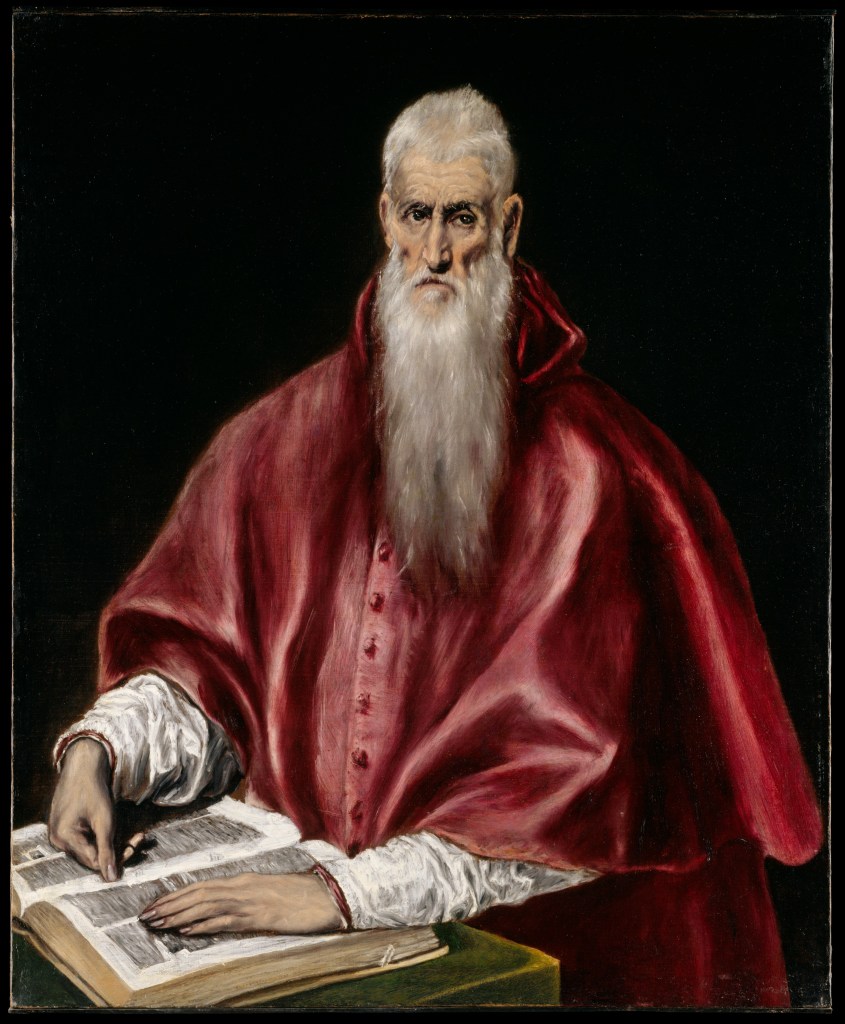
❦
“.. because in this way the form will be perfect and not reduced, which is the worst thing that can happen to a figure.”
❦


❦
“I am neither bound to say why I came to this city nor to answer the other questions put to me”
❦



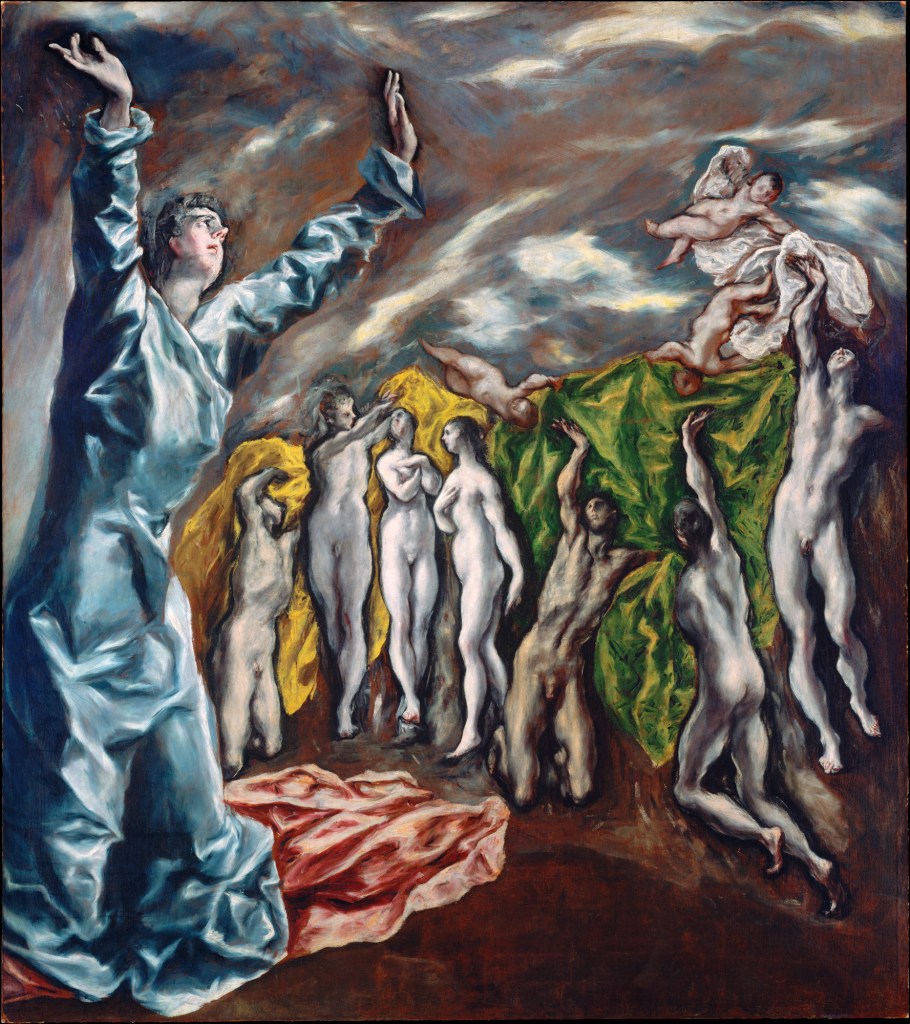


El Greco signed his paintings
with his full name,
in Greek:
“Created by Doménikos Theotokópoulos“

❦
I’ve chosen two musical pieces connected to El Greco in different ways
❦
Vangelis
El Greco Movement V
❦
From his album El Greco, 1998
&
Francisco Leontaritis (1518-1572)
A Greek composer, singer and hymnographer from the birthplace of El Greco.
Ad Dominum Cum Tribularer
❦
From the album: Polyphonia – The Hellenic Renaissance-Franghiskos Leontaritis • Dir. Nikos Kotrokois
❦
For more information on El Greco:
https://www.el-greco-foundation.org/
https://www.metmuseum.org/toah/hd/grec/hd_grec.htm
https://www.nga.gov/collection/artist-info.1356.html#works
https://en.wikipedia.org/wiki/El_Greco
https://www.historical-museum.gr/eng/collections/view/el-greco
https://www.nationalgallery.org.uk/artists/el-greco


After a satisfying review of this post, I must say “View of Toledo” is my fave!
Thank you, again, dahling!
xoxoxoxoxoxoxoxoxoxo
Perfect! No wonder he’s considered a precursor of cubism (and expressionism), right?!!!
Love and hugs flying over to you!
🧡🌻🧡🌻🧡🌻🧡🌻🧡🌻🧡
Yes.. he had guts to break the rule of only painting religious themes. xoxoxo
👍🧡🧡🧡
A remarkable painter, indeed. HIs faces are very expressive, some disturbingly so.
Oh, yes… very distinctive style too!
Very neat! El Greco seems to have pushed boundaries in his era.
He stuck to the religious doctrine, which was important for survival in the art world at the time.
Nonetheless, he applied a new style, his style. It worked!
xoxoxoxoxoxoxoxoxoxoxoxo
The music is odd, but works. 😀
xoxoxoxoxoxoxo
Ah, yes. Eventhough he began as a traditional Byzantine painter he gradually as you say pushed boundaries. In his paintings you can see so many painters, even from the 20th century!
I’m so happy you enjoyed his work.
😚🤗😘😚🤗😘❤
Love it!!
xoxooooooooxoxoxoxoxooooo
🐾xoxoxoxoxoxoxoxoxoxoxoxoxoxoxoxoxo🐾
Wonderful and fascinating, Marina. Thanks for sharing and taking the time to educate, my friend, and Happy Friday! 💗🎉💗🎉
AH, thank you, Lauren. Just a reminder of a master’s work, honoring his date of birth. With all that’s happening around us, we tend to forget what great talents have walked on this earth! 😉
Happy Friday and weekend! Oh, and look up for the Moon and Mars! 😉 xoxoxoxo
Good point, Marina, and I can’t see the moon and stars because our sky is hazy again. 😦 Fires, fires, Fires. But I can imagine them both and I have a tapestry of a starry night that I’ve used for a Zoom background. It’s pretty cool. 🙂 Love and hugs xoxoxo
I hope fires go out and skies clear!
Many hugs and love to you! xoxoxoxoxo
Fascinating! Not being a formal student of art history, I was delightfully surprised to learn El Greco was Greek! I love his use of blues and greens and agree with you about him being a precursor to Picasso, Opening of the Fifth Seal, as example. His The Dormition and Assumption of Theotokos surprised me too. In my brief exploration of Orthodoxy I’d never seen his work, only other icons. Thanks for another art history lesson!
Oh, my dear Mary Jo, this is a mere glimpse of his artwork to honor him on his birthday. If only it were a history lesson! 😉 There’s this very interesting and informative documentary / film about him, narrated by Adrien Brody: https://vimeo.com/111130123
I think you’ll enjoy it if you have the time to watch.
…and yes, those blues and greens!
Sending many hugs and wishes for a lovely weekend! xoxo
Thank you I will!
…and a wonderful weekend to you as well! (El Greco=The Greek=Duh) 😂🤗😘
😉 Thank you, my dear Mary Jo! xoxo
I find his depiction of the folds in fabric to be most striking!
✨☀️🙏🕉️♾️☮️🙏☀️✨
They are. I think his traditional Byzantine background must have played a role in this. Glad you enjoyed, my friend. 🙏
The artwork you choose is so breathtaking! Lovely post! ❤️🥰🌹🌸🤗❤️
Ah, thank you, Holly. It’s really hard actually leaving out paintings and in fact I would have added many more (some favorites too) if it weren’t for copyright issues. Something which in the case of master painters, is beyond me, but that’s how it is. 😉
Have a wonderful Friday and weekend ahead! 🥰😍🥰😍🥰😍🥰😍🥰😍🥰
Well, I love Art and your paintings and those of other artists that you post are so beautiful 😍 I love them.
Awww… thank you! I’m so so very happy you enjoy these! xoxoxoxoxoxoxoxoxo
xoxoxo
xoxoxoxoxo
xoxoxoxoxo
❤🧡❤
❤🧡❤ thank you pretty lady.
xoxoxoxoxoxoxoxoxoxoxo
xoxoxo 💐
He is so amazing – to see his work in person is an experience. small pictures do not do his work justice. The luminosity, the movement of colors and shapes. An expert of anatomy and close observation and depiction of cloth. The perspective of The Assumption- to stand beneath that and look up into the painting.
One of the reasons I had to get to Toledo
Lovely post!
You’re right about the size… and screen! I had seen many of his works in books but it wasn’t until I saw his paintings in person that I felt that awe… Makes perfect sense wanting to travel to Toledo!
Thank you, my friend! I’m so glad you enjoyed this… reminder of this master’s work.
It’s like that with many of the Great Masters’ works – as well as the Impressionists and “Modern Art”. In person the painting make sense – and the brush work so fascinating. The canvas size can turn your previous thoughts about an artist on head – paint – especially well seasoned paint – is totally different when you are standing there.
Darn COVID. Should be traveling and enthralled by paintings everywhere now. 😦
Oh, yes, it is totally different! I remember how shocked -as in, hit on the head, shocked!- when I saw the Nightwatch in Amsterdam. Seeing it in a book is the analogy of seeing as a stamp!
Yes, I know… at least we were lucky enough to see quite a few paintings. I dread to think about kids today.
Virtual just doesn’t do it. Sigh
Nope, it doesn’t! and another sigh!
Sorry, but he is one artist that I cannot connect with.
Caravaggio on the other hand (similar style) has a command of light and dark that instantly gives a sense of wonder or foreboding that El Greco just doesn’t have.
As you’d expect, I respectfully …strongly disagree! 😉 They are quite different in style, in fact two huge ‘monoliths’ of art. Only difference is that El Greco is extremely ahead of his time [however cliché it may sound] foreboding artists of the 20th century. I can see Picasso as well as Van Gogh in him. But, in terms of connecting or not with an artist… that’s only natural. 😉 Thank you for your comment, my friend.
Thanks for the reply Marina; so far it looks like I could be the only one who dislikes his work. 😎
I have tried but – hay-ho.
As an aside, do love these and the separate music posts you have been doing.
Liking is not compulsory! When I was younger, I didn’t like Byzantine art… I mean the religious paintings. El Greco came from that background and it took a few years before ‘discovering’ and ‘connecting’.
Thank you for your kind words. I’m really happy to hear that! 🙏😊